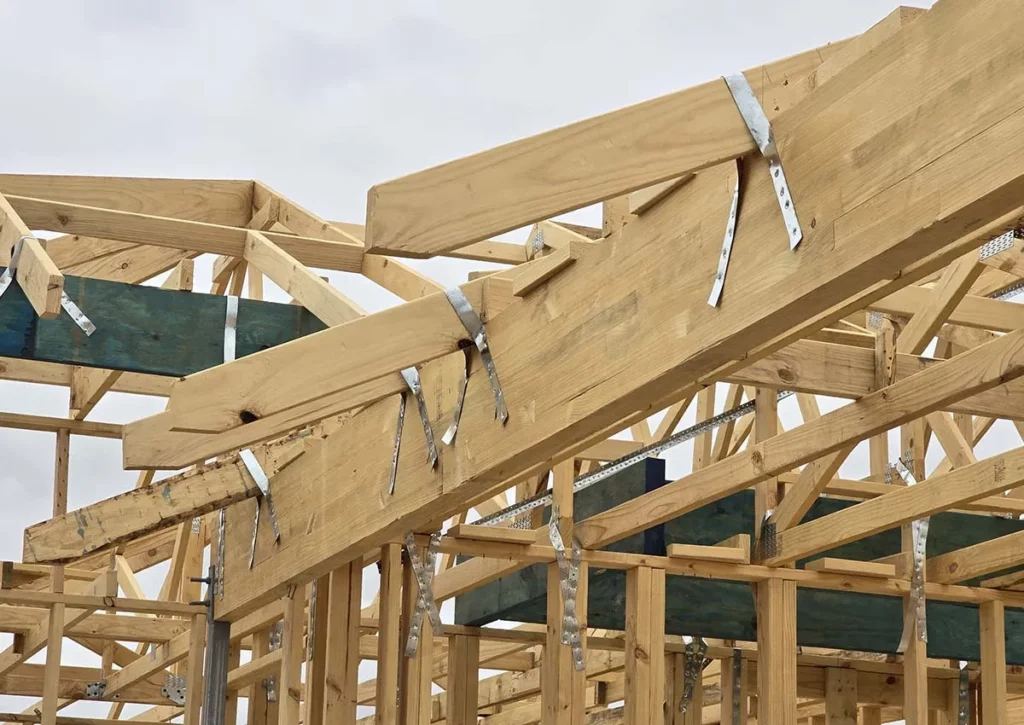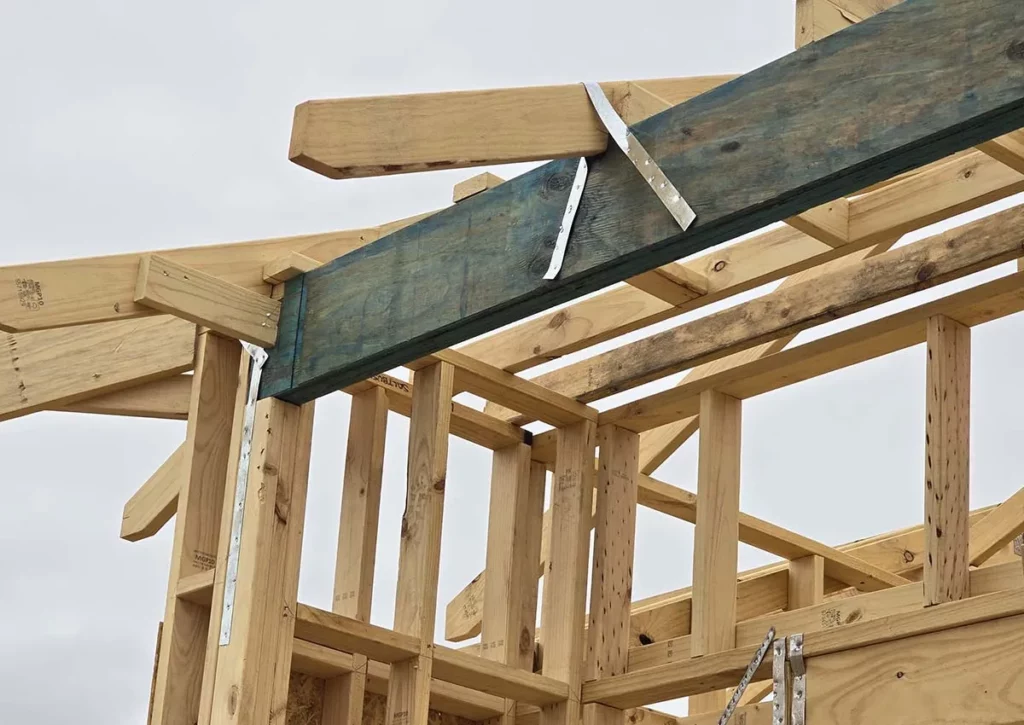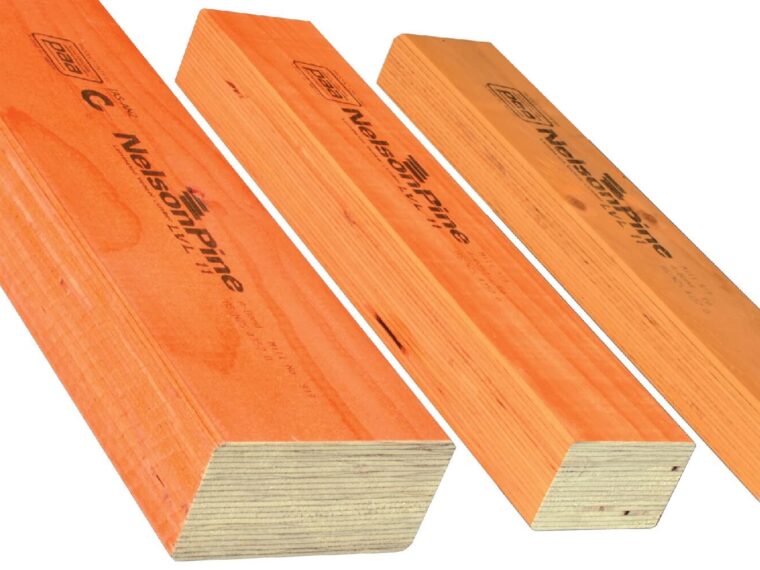Understanding LVL Timber
Unlike solid timber, which can warp and split due to natural variations in the wood, LVL timber provides uniformity in size and strength, making it a reliable option for demanding conditions. Its manufacturing process also allows for the use of faster-growing tree species, contributing to sustainability efforts in the timber industry. This not only helps in conserving slower-growing species but also supports responsible forestry practices, ensuring that the environmental impact of timber production is minimized.
What is LVL Timber?
LVL, or Laminated Veneer Lumber, is an engineered wood product created by bonding together thin sheets or veneers of wood with adhesives. This process results in a highly durable and stable composite material that is often used in place of traditional solid wood products. The construction of LVL timber formwork allows it to maintain a consistent quality and performance, making it an ideal choice for various applications, including formwork in construction.
Key Characteristics of LVL Timber
LVL timber is recognized for several key characteristics that enhance its utility in construction:
- Strength: LVL is engineered to provide superior strength-to-weight ratios, making it capable of bearing heavy loads without deforming.
- Dimensional Stability: The laminated structure minimizes the potential for warping, cracking, or shrinking, ensuring dimensions remain consistent over time.
- Versatility: LVL can be manufactured in various dimensions and shapes, catering to diverse construction needs.
- Workability: LVL timber can be cut, shaped, and drilled much like traditional wood, allowing for easy installation in formwork applications.
In addition to these characteristics, LVL timber is also known for its excellent performance in various environmental conditions. It is resistant to moisture and can be treated to withstand pests, making it suitable for both indoor and outdoor applications. This adaptability is particularly beneficial in regions with fluctuating climates, where traditional wood may struggle to maintain its integrity. Furthermore, LVL’s lightweight nature simplifies transportation and handling on job sites, reducing labor costs and improving overall efficiency during construction.
Another significant advantage of LVL timber is its aesthetic appeal. While it is primarily used for structural purposes, LVL can also be finished to showcase its natural wood grain, allowing it to blend seamlessly into architectural designs. This feature makes it a popular choice not only for structural elements but also for exposed beams and other decorative applications, providing a modern yet warm look to residential and commercial spaces alike. As architects and builders continue to explore innovative ways to incorporate engineered wood products, LVL timber stands out as a versatile and attractive option that meets both functional and design needs.

The Role of Timber in Formwork Applications
The Importance of Formwork in Construction
Formwork plays a crucial role in the construction process, serving as a mold that holds concrete in place while it cures. It is essential for ensuring that concrete structures achieve the desired shape, strength, and finish. Effective formwork is essential not only for the structural integrity of buildings but also for enhancing work efficiency and worker safety.
Quality formwork can significantly reduce construction time and costs. It allows for the rapid pouring and setting of concrete, minimizing delays caused by traditional curing methods. Furthermore, proper formwork facilitates smooth surfaces and precise lines, improving the aesthetic quality of the finished structure. The design of formwork can also influence the thermal properties of the concrete, ensuring that it cures at an optimal rate, which is particularly important in varying weather conditions.
Why Timber is Used in Formwork
Timber has been a traditional choice for formwork due to its inherent qualities. It is lightweight, easy to handle, and provides adequate strength for most concrete applications. Additionally, timber formwork can be reused multiple times, offering an economical option for contractors. This reusability not only contributes to cost savings but also aligns with sustainable building practices, as it reduces waste generated from single-use materials. Find more about reusability on https://vtechworks.lib.vt.edu/items/c79c4b16-29f8-4504-b94b-8991d8053140
Timber’s adaptability to different shapes and sizes also makes it a versatile choice. It can be customized on-site with minimal effort, allowing for quick adjustments in the construction process. Moreover, timber’s natural appearance can create an architectural feature in visible areas of concrete work, adding to the overall aesthetic of the project. The ability to easily cut and shape timber means that intricate designs can be achieved, enabling architects and builders to push the boundaries of creativity in their projects. Additionally, the use of timber can help in sound dampening, providing a quieter working environment during the pouring process, which is beneficial for both workers and nearby residents.
Advantages of Using LVL Timber in Formwork
Durability and Strength of LVL Timber
One of the standout advantages of LVL timber in formwork applications is its remarkable durability. Unlike conventional timber that can suffer from deterioration over time, LVL timber’s engineered structure makes it resistant to warping and splitting. This durability means that formwork made from LVL can withstand harsh construction conditions and extended exposure to moisture without compromising its integrity.
In terms of strength, LVL timber consistently outperforms solid wood. Its manufacturing process allows for a higher load-bearing capacity, which is critical when supporting heavy concrete during curing. This strength-to-weight ratio results in safer, more reliable formwork solutions. Additionally, LVL timber’s uniformity in grain and density ensures predictable performance under load, which is essential for structural integrity during construction. This predictability not only enhances safety but also instills confidence in engineers and builders who rely on these materials for critical applications.
Cost-effectiveness of LVL Timber
Incorporating LVL timber into formwork systems can be a cost-effective decision for construction projects. The initial investment may be higher than regular timber, but the longevity and reusability of LVL significantly reduce overall expenses. Since LVL can support greater loads and is less prone to damage, it often leads to fewer replacements and repairs over the course of a project.
Moreover, the quick installation and ease of handling associated with LVL can accelerate construction timelines. Quicker project completion not only reduces labor costs but also allows for early returns on investment for contractors and clients alike. The lightweight nature of LVL timber makes it easier for crews to transport and manipulate on-site, further enhancing productivity. This efficiency can be particularly beneficial in large-scale projects where time is of the essence, allowing teams to allocate resources more effectively and meet tight deadlines without sacrificing quality. Click here to read more about productivity.
Environmental Impact of Using LVL Timber
As awareness of sustainability increases in the construction industry, LVL timber emerges as an environmentally friendly alternative. It utilizes renewable resources more efficiently than traditional solid timber, as it allows for the use of smaller, faster-growing tree species that may not be suitable for solid wood applications.
Furthermore, the manufacturing process of LVL timber involves careful selection and sourcing of wood fibers, which helps minimize waste. By utilizing by-products and timber that might otherwise go unused, LVL contributes to better resource management within the timber industry. Additionally, as a wooden product, LVL sequesters carbon, further reducing its environmental footprint compared to other materials. This characteristic not only supports global efforts to combat climate change but also aligns with the increasing demand for sustainable building practices among consumers and regulatory bodies. As construction projects strive for green certifications, the use of LVL timber can significantly enhance a project’s sustainability profile, making it a preferred choice for environmentally conscious builders and developers.
Comparing LVL Timber to Other Materials
LVL Timber vs. Solid Timber
While solid timber has been a go-to material for formwork for many years, LVL timber offers several benefits that often make it a superior choice. Solid timber can be unpredictable in terms of quality, as natural defects can lead to inconsistencies. In contrast, LVL’s engineered nature ensures uniform performance.
In terms of strength, LVL timber generally outperforms solid wood, allowing for safer and more efficient construction practices. Additionally, LVL timber’s resistance to warping and swelling due to moisture makes it a more reliable option for formwork, especially in humid environments. This stability not only enhances the structural integrity of the construction but also reduces the need for frequent adjustments or replacements, ultimately saving time and labor costs. Moreover, LVL timber can be manufactured in longer lengths than solid timber, which minimizes the number of joints required and contributes to a smoother, more continuous surface in formwork applications.

LVL Timber vs. Steel
When comparing LVL timber to steel, the two materials present varied advantages based on the specific needs of a project. Steel offers immense strength and longevity, often making it the preferred choice for heavy-duty construction. However, it also comes with drawbacks such as increased weight, higher costs, and complications related to thermal conductivity.
On the other hand, LVL timber provides adequate strength while remaining lightweight and easy to work with. Its natural insulating properties help regulate temperature, which is beneficial during concrete curing processes. For many formwork applications, LVL timber presents a balance of strength, cost, and ease of use that can be advantageous over steel in specific situations. Furthermore, the installation process for LVL timber typically requires less specialized equipment compared to steel, making it more accessible for smaller construction teams. The environmental impact is also a consideration; LVL timber is often sourced from sustainably managed forests, making it a more eco-friendly option compared to steel, which has a higher carbon footprint due to its manufacturing process. This sustainability aspect is increasingly important to modern builders and architects who prioritize green building practices.
Future Trends in LVL Timber Usage
Technological Advancements in LVL Timber Production
The field of engineered wood products, including LVL timber, is witnessing rapid technological advancements. Innovations in production processes are improving the efficiency and scalability of LVL manufacturing. These advancements may involve the use of better adhesives, automated manufacturing techniques, and advanced cutting technologies, all of which contribute to enhanced quality control and performance capabilities.
Moreover, research continues into optimizing wood fiber utilization, allowing for greater sustainability within the industry. These technological improvements are expected to increase the adoption of LVL timber in a broader range of construction applications beyond mere formwork.
Sustainability and LVL Timber in Construction
As the construction industry moves towards more sustainable practices, LVL timber is likely to play an increasingly prominent role. Its environmentally friendly production methods align with a growing emphasis on reducing carbon footprints and utilizing renewable materials. Builders are likely to seek out LVL timber not just for its performance and cost benefits, but also for its alignment with environmentally responsible building practices.
With rising consumer interest in green building certifications and practices, the demand for sustainably sourced LVL timber is expected to increase. As a result, suppliers and manufacturers will likely continue to innovate, ensuring that LVL remains a leading option in the evolution of eco-conscious construction materials.
Read about where to buy timber at: Where to Buy LVL Timber for Your Formwork Needs

